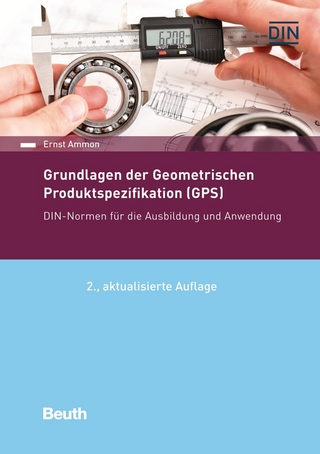
Architectural Modelmaking
Laurence King Publishing (Verlag)
978-1-85669-670-8 (ISBN)
- Titel erscheint in neuer Auflage
- Artikel merken
The physical scale model is often cited as an important tool of communication for architecture students and practitioners alike. Although the proliferation of CAD programmes has enabled the creation of increasingly complex computer models and virtual environments, there is also a growing need to address the threedimensional qualities of architecture that may be lost when using such media. This book focuses on the inspiring possibilities for modelling the built environment with all the different media and techniques that are now available. Through description of the use of different models in different contexts, the book provides a practical and effective guide to how and why models are used, in addition to what they are used for, and, furthermore, how they relate to architecture education. Following a brief introduction, the book is divided into three sections: Media, Types and Applications. The book is generously illustrated with photographs of models, accompanying commentaries, and step-by-step practical instructions on the various techniques associated with modelmaking. Architectural Modelmaking will provide a concise yet broad toolbox for students of architecture.
Nick Dunn is Principal Lecturer at the Manchester School of Architecture. His research interests are in the fields of visualization, representation in architecture and urbanism. His publications include The Ecology of the Architectural Model (2007).
INTRODUCTION / WHY WE MAKE MODELS / A BRIEF HISTORY / MODELMAKING NOW / ABOUT THIS BOOK GETTING STARTED MACHINES MEDIA / INTRODUCTION / Abstraction / Size and scale / The selection and composition of media / PAPER AND CARDBOARD / Step by step: Developing a design using paper models / WOOD / Naturally grown woods / Wood-based sheets / Step by step: woodworking / STYROFOAM AND PLASTICS / Case study: Using plastics and styrofoam / Step by step: Making an acrylic model / RESIN, CLAY AND CAST MATERIALS / Step by step: Casting a plaster model / Step by step: Using plasticine to develop form / Step by step: Casting a concrete model / STEEL AND OTHER METALWORK / Step by step: Modelling a geodesic dome / CAD/CAM / Step by step: Developing a model using CAD/CAM / PHOTOGRAPHY AND FILM / Step by step: Creating a realistic photomontage / Digital and camera technology TYPES / INTRODUCTION / CONCEPT MODELS / SITE/CITY MODELS / BLOCK/MASSING MODELS / DESIGN DEVELOPMENT MODELS / Step by step: Making a wax model / Case study: Process models / SPATIAL MODELS / STRUCTURAL MODELS / INTERIOR-ARCHITECTURE MODELS / Case study: Exploring light and shadow / LIGHTING MODELS / Step by step: Investigating light effects on an interior / PRESENTATION/EXHIBITION MODELS / Step by step: Making a presentation model / Case study: Models for an exhibition / FULL-SIZED PROTOTYPES / Case study: Prototype models / Step by step: Making a cladding model APPLICATION / INTRODUCTION / DESCRIPTIVE MODELS / PREDICTIVE MODELS / Case study: Detail models / EVALUATIVE MODELS / Case study: Evaluating a space / Step by step: Evaluating the effects of a facade / EXPLORATIVE MODELS / Step by step: Exploring materials through models / Case study: Evolving Scars, Bernard Khoury / MODELLING THE FUTURE ENDMATTER / GLOSSARY / FURTHER READING / INDEX / PICTURE CREDITS / ACKNOWLEDGEMENTS
| Erscheint lt. Verlag | 13.9.2010 |
|---|---|
| Zusatzinfo | 450 illustrations, 435 in colour |
| Verlagsort | London |
| Sprache | englisch |
| Maße | 217 x 282 mm |
| Gewicht | 750 g |
| Themenwelt | Informatik ► Weitere Themen ► CAD-Programme |
| Technik ► Architektur | |
| ISBN-10 | 1-85669-670-7 / 1856696707 |
| ISBN-13 | 978-1-85669-670-8 / 9781856696708 |
| Zustand | Neuware |
| Haben Sie eine Frage zum Produkt? |
aus dem Bereich



